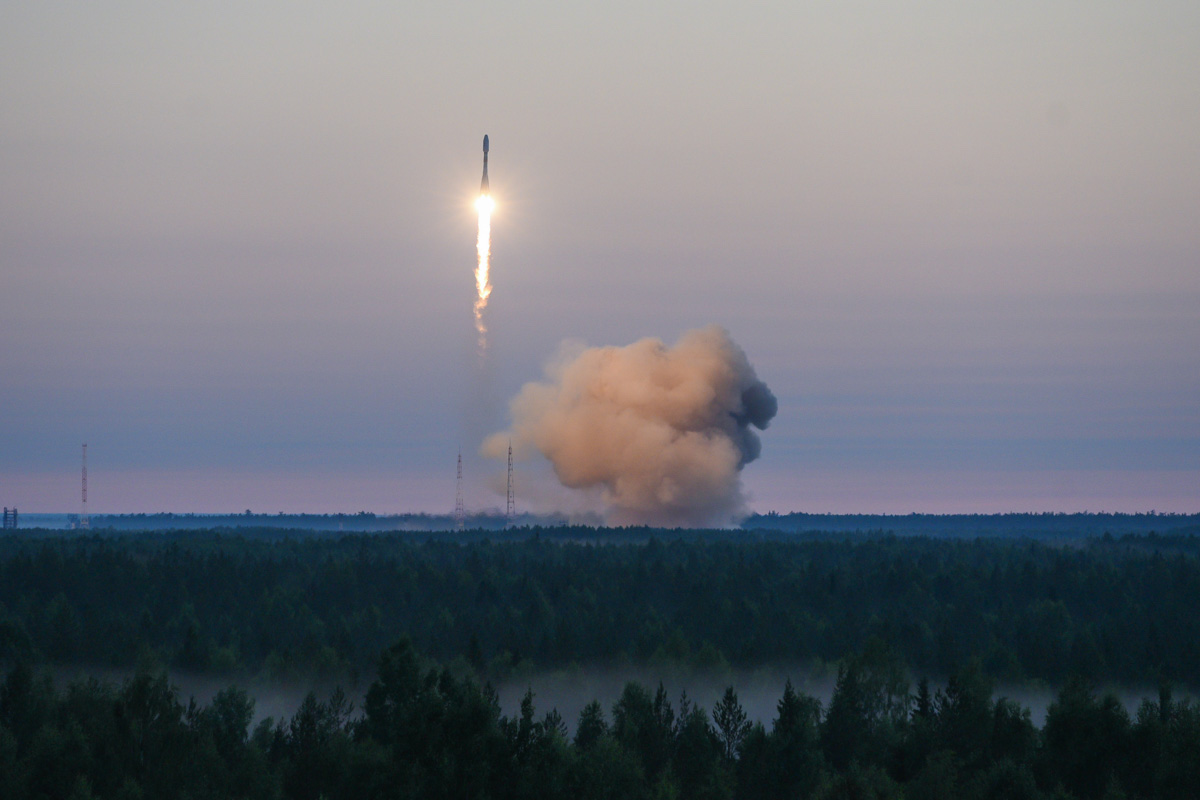Russia’s military launched the first of a new type of ship-locating radar imaging satellite Friday aboard a Soyuz rocket.
The Russian Ministry of Defense said the Soyuz-2.1b rocket took off from the Plesetsk Cosmodrome, located about 500 miles (800 kilometers) north of Moscow, at 3:50 p.m. EDT (1950 GMT) Friday.
Heading northeast from Plesetsk, the Soyuz released its four liquid-fueled first stage boosters about two minutes after liftoff. The rocket later jettisoned its central core stage and payload shroud, leaving a third stage engine to place the military payload into orbit.
Russian defense officials said the rocket successfully deployed the military satellite into orbit. U.S. military tracking data confirmed the mission put the spacecraft into an orbit ranging in altitude between 121 miles (195 kilometers) and 289 miles (466 kilometers).
The spacecraft’s orbital plane is angled 67.1 degrees to the equator, according to published orbital tracking data.
The new satellite was officially designated Kosmos 2550. Russia uses the Kosmos name for its military satellites.
While the Russian military did not identify the type of satellite launched Friday, the payload is widely believed to be the first Pion-NKS spacecraft fitted with an active radar to capture all-weather, day-and-night imagery of ship movements.
The images will help the Russian military locate, identify, and potentially target foreign naval forces. The Pion-NKS satellites are companions to Russia’s Lotos series of military satellites, which intercept radio signals that can be used to find the positions of military vehicles, including ships.

The Lotos and Pion-NKS satellites are part of Russia’s Liana electronic intelligence program, a successor to Russia’s Cold War-era US-A and US-P military satellites. The first Lotos satellite launched in 2009.
The Pion-NKS satellite launched Friday is expected to use its own propulsion system to maneuver into an operational circular 310-mile-high (500-kilometer) orbit in the coming days.
KB Arsenal, a Russian military contractor in Saint Petersburg, builds the Lotos and Pion-NKS satellites in partnership with TsSKB Progress.
The Russian Defense Ministry said more than 80 military crew members participated in launch operations at Plesetsk.
The launch Friday was the first of three Soyuz missions scheduled in less than a week from three Russian-operated cosmodromes.
A Soyuz rocket is awaiting liftoff from the Tuesday at 7:27 p.m. EDT (2327 GMT) from the Baikonur Cosmodrome in Kazakhstan with a Progress supply ship heading for the International Space Station
Teams at the Vostochny Cosmodrome in Russia’s Far East are readying a Soyuz rocket and Fregat upper stage for launch at 8:48 a.m. EDT (1248 GMT) Thursday with 36 more OneWeb internet satellites.
Email the author.
Follow Stephen Clark on Twitter: @StephenClark1.
